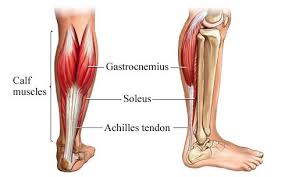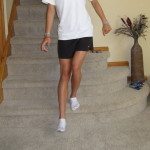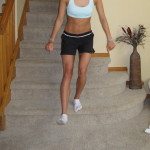Pilates for Triathletes Run Part I: The Single Leg Squat
Whether you’re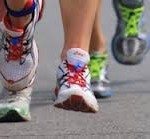 the occasional, recreational, or elite runner, there is one common link that should exist between all runners. It is independent of how the foot hits the ground or if the shoe is $50 or $250. It is also independent of age. The common link that should exist with all runners is: a strong, stable and efficient hip-pelvic-core complex.
the occasional, recreational, or elite runner, there is one common link that should exist between all runners. It is independent of how the foot hits the ground or if the shoe is $50 or $250. It is also independent of age. The common link that should exist with all runners is: a strong, stable and efficient hip-pelvic-core complex.
The parts of the hip-pelvic-core complex are: the leg, pelvis and trunk. Within this group, dissociation of the parts must occur in order to have optimal running. In addition, the parts need to work synchronously, which is evident in a single leg squat. Most importantly, the legs should be mobile and fluid beneath a stable pelvis and trunk; the principle of mobility on stability. And, once again, Pilates is a perfect choice to tackle this concept.
Muscles of Running
Honestly, you can make a case for any and every muscle in the body. Running is a whole body event that recruits the entire musculoskeletal system to propel our body through space. There is controversy about which muscles actually activate during running. Which ones propel us forward? Which ones control or brake the run? Which ones are more susceptible to injury? Let’s break it down a bit. The muscles listed below are based on current EMG (electromyographic) studies.
Anatomy Pictures for Reference
Which muscles propel us forward?
- Gluteus Maximus (GMax)
- Vastus medialis (VMO)
- Gatrocnemius (medial and lateral head) (Gastroc)
- Soleus
Interesting Notes
- Walking only relies on the GMax and gastrocnemius for propulsion
- GMax and VMO are two of the main power players of the cycle stroke, mentioned in the last Pilates post. These two muscles are usually weak, but they are essential for biking AND running. Isn’t it interesting that they are often so weak and dysfunctional?
Which muscles assist to propel us forward?
 Hamstrings (medial and lateral): this muscle group is very active during the swing phase (when the leg is off the ground), especially at the end of swing phase. The hamstrings work eccentrically to decelerate or brake the forward swinging leg. An eccentric contraction is a contraction of the muscle while it is lengthening. Because the hamstring is continuously working to “control the stretch,” it is very susceptible to injury. It is even more susceptible when runners do not have the GMax (the main hip extender) working and rely on the hamstring (an accessory hip extender) to do all of the work. Because at that point, the hamstring is pulling “double duty.” It’s acting as a hip extender and swinging leg decelerator…and injury is just waiting for its opportunity.
Hamstrings (medial and lateral): this muscle group is very active during the swing phase (when the leg is off the ground), especially at the end of swing phase. The hamstrings work eccentrically to decelerate or brake the forward swinging leg. An eccentric contraction is a contraction of the muscle while it is lengthening. Because the hamstring is continuously working to “control the stretch,” it is very susceptible to injury. It is even more susceptible when runners do not have the GMax (the main hip extender) working and rely on the hamstring (an accessory hip extender) to do all of the work. Because at that point, the hamstring is pulling “double duty.” It’s acting as a hip extender and swinging leg decelerator…and injury is just waiting for its opportunity.
- Gluteus medius (GMed): the main hip abductor helps control the amount of knee valgus. Knee valgus is when the knee turns in past the big toe (picture 1). Many runners experience hip or knee pain while running because of knee valgus. This pain is usually the result of poor GMed, GMax and VMO activation.
Picture 1 and 2 is a former patient of mine in 2009. She was a high school soccer player with chronic left hip pain. After 8 weeks of physical therapy and exercise progression to a single leg squat, the result is Picture 2.
What other muscle group is important for running?
- The Core. I’ve mentioned in previous posts the importance of the core. There are four layers of abdominals and the inner two (transverse abdominus and internal oblique) are the true stabilizers. If these muscles are not engaged to stabilize the pelvis, then all of the other muscles attaching to the pelvis are off their game. Think of it this way. The core is the anchor from which the legs find stability. If the anchor is loose or wobbly (i.e. weak core), do you see how that would change the transfer of power?
Ok, let’s talk about that single leg squat!
Last week, I posted a blog about double leg squats. The post mentions how squats strengthen the lower extremity and hip muscles. But, for my runners, squats are just the beginning. The progression to single leg squats is a specific sports performance test and exercise I encourage all of my runners to master; I like to see 10 awesome squats on each leg. Can you do 10 single leg squats on each leg? Single leg squats that are mechanically correct and controlled? Yes? GO RUN! No? Keep reading.
The Power Behind the Single Leg Squat
This test and exercise gives information about the core, GMed, GMax, VMO, single leg balance, ankle stability, ankle motion and co-activation of the quadriceps and hamstrings; all of the good stuff we need for running. It demonstrates the patient’s ability to sync up the lower half of the body to perform a high level exercise. It is a consistent test in research, having a low margin of error, that applies equally to male and females. It’s a great test and doesn’t require any fancy equipment.
Blog Activity: Progression from Double Leg Squat to Single Leg Squat
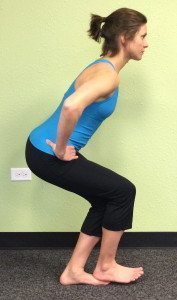 You MUST feel your GMax and GMed working in regular squat before making this progression. If you don’t, please don’t try more than one single leg squat. It could cause some unnecessary knee pain.
You MUST feel your GMax and GMed working in regular squat before making this progression. If you don’t, please don’t try more than one single leg squat. It could cause some unnecessary knee pain.- Stand with feet hip distance apart.
- Place your right heel on your left toes. (I use this as a transition phase to keep the pelvis level).
- Use the same mechanic as the double leg squat (“sit into a chair”) and try to squat down with the left leg.
- Keep the knee tracking over the 2nd toe and make sure the knees don’t go past the toes.
- Go as deep as you can keep a good mechanic, but not past 90º.
The Power of Pilates to Master the Single Leg Squat
A squat on the Reformer is quite difficult. If the hip-pelvic-core complex is not working synchronously, it doesn’t really work. A Reformer squat takes stability, strength, precision and concentration. And, if you try to “just muscle through it,” it will throw you right off the machine. No joke! I have caught quite a few patients because they forgot to listen to one critical piece of instruction: “Stabilize before you move”. It’s the mantra of Pilates and should be the mantra of how we all move our body through space. A Reformer squat tackles the principle of mobility on stability and instantly engages all of the important running muscles. It is actually a very fun move to master, with a healthy dose of fear!
Video of Reformer Squats to Single Leg Squats
© 2014 and Beyond. ALL BLOG CONTENT at duncansportspt.com by Lori Duncan PT
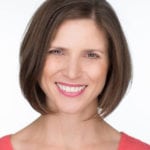 ABOUT THE AUTHOR
ABOUT THE AUTHOR
Lori Duncan, DPT, MTC, CPT is a respected Physical Therapist, Manual Therapist and Pilates instructor in Lafayette, CO. Lori is passionate about preventive physical therapy and education and is a nationally recognized presenter. She can be reached at [email protected]. You can also follow Duncan Sports Therapy + Wellness on Facebook & Instagram for more free tips and information.
References
Alenzi F, Herrington L, Jones P, Jones R. The reliability of biomechanical variables collected during single leg squat and landing tasks. J Electro Kinesio. 2014:24;718-721
Ellis R, Sumner B, Kram R. Muscle contributions to propulsion and braking during walking and running: insight form external force perturbations. Gait Posture. 2014:40(4);594-599.
Stickler L, Finley M, Gulgin H. Relationship between hip and core strength and frontal plane alignment during single leg squat. Phys Ther Sport. 2014: In press at time of blog.



